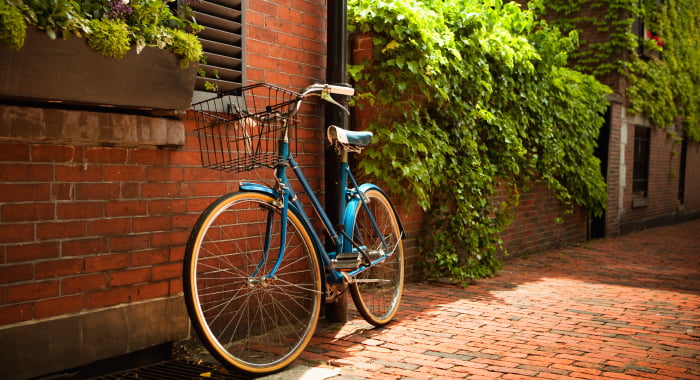This blog post was written by Student Advisory Council member, David Gonzalez.
Whether it’s to live a healthier lifestyle, cut gas costs, or lessen your environmental impact, buying a bicycle may be a wise decision to make. Though a bike is not as large of a purchase compared to an automobile, there are still several things to consider beforehand.
Upfront Costs and Considerations
The cost of a bike is largely determined by type and quality. The most common adult bicycle types are road, mountain, and cruiser; their prices typically range from $200 to $700 for standard models. Consider first, your reasons for purchasing the bike and the terrain you expect to encounter, such as roads, rocky trails, etc. Only then, can you know what bicycle type best suits your lifestyle. Afterwards, figure out what size frame you will need by using an online table or visiting a nearby bike shop. Bicycles tend to be more expensive the larger they are, so this step will be crucial to establishing a budget. Shop online or in person to get a sense of prices.
For safety, consider buying a helmet, lights, and reflectors. Bike laws vary from municipality to municipality, meaning some areas may require both, neither, etc. Regardless of laws, it’s always best to err on the side of caution by being as safe as possible, so these accessory purchases are easily justifiable. Since your bike may often be kept outside in public areas, you want to ensure that it will not be stolen, even if you trust your local area. For this, you might want to purchase a lock.
Other Options
New quality bikes are expensive. However, you don’t have to break the bank to own one. Second-hand bikes are often great options in such cases. These models are typically 5 to 10 years old and can last you long enough to save up for another. Additionally, some companies offer discounts to students, senior citizens, (active or inactive) military personnel, and first responders.
Unexpected Costs
If used enough or if you ride on harsh terrain, your bicycle will most likely require regular upkeep. Prior to your purchase, account for the expected repair and maintenance costs. Consult your budget to see if the purchase is worthwhile. Think about the kinds of repairs you are willing to do yourself and the spare parts you will need, too.
Insurance
If you purchased a high value bicycle, you should consider purchasing an insurance policy on it. Some homeowner and renter policies cover bicycle thefts. However, many of these have large deductibles and require that the bicycle have been stolen from your residence. This may not be sufficient or appropriate coverage for everyone.
If you prefer to better safeguard your bicycle and if you’re often not home, a bicycle-specific insurance plan might work best. Many of these plans offer additional services aside from theft protection, such as roadside assistance, cycling apparel reimbursement, and liability coverage in case of an accident. Some bicycle insurance companies even offer discounts for cycling association memberships.
.png?width=258&height=68&name=Harvard_Primary_Logo_Horiz_RGB%20(2).png)




